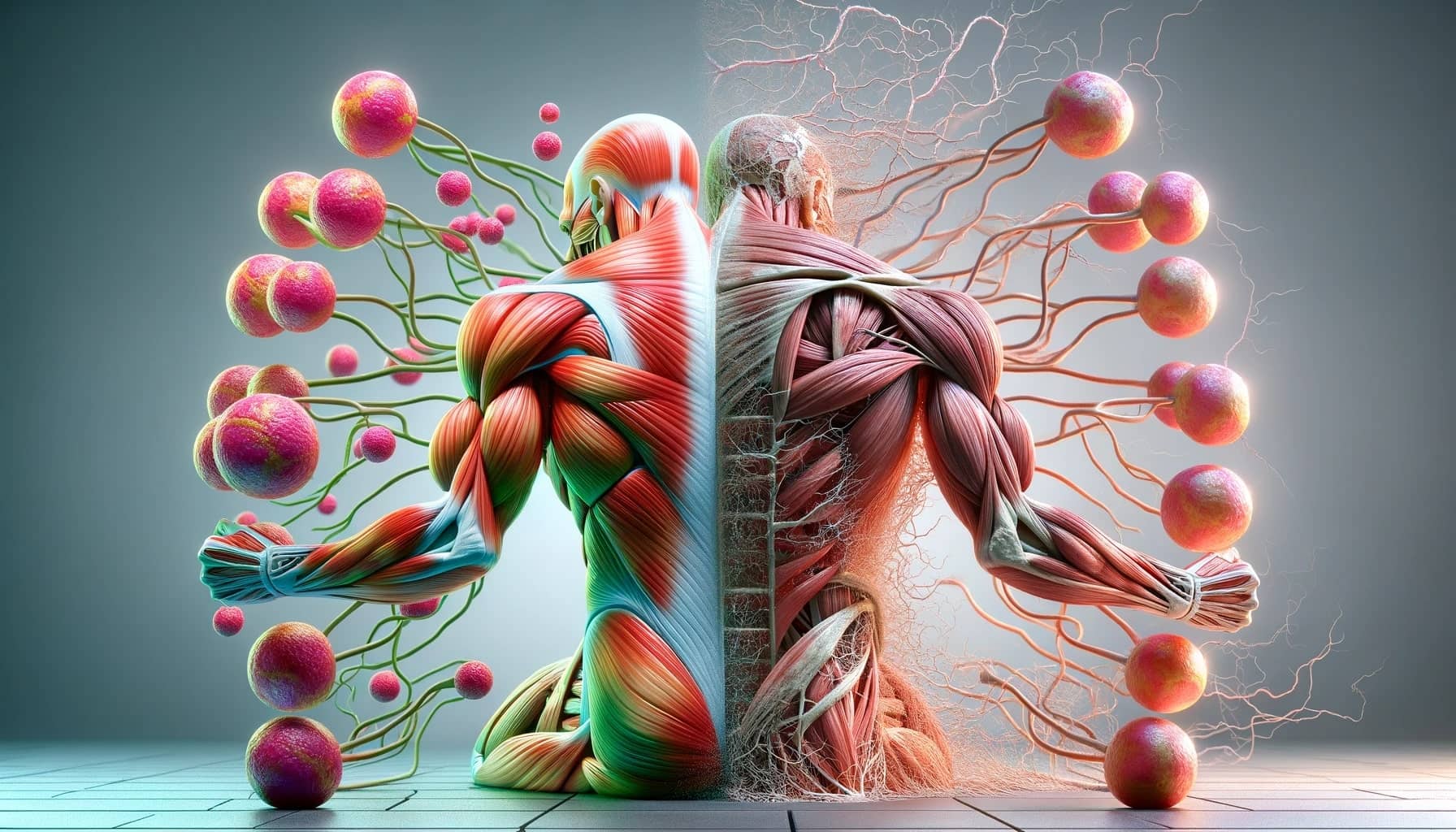
Anabolic Resistance: Unraveling Muscle Decline in Aging
As we grow older, our bodies change in many ways. One of these changes is how our muscles respond to the protein we eat, a condition known as anabolic resistance. This article takes a close look at anabolic resistance in aging, exploring its causes and effects on muscle health. We’ll also examine the differences between older adults who stay active (Master athletes) and those who don’t, and how these lifestyle choices affect muscle health.
Understanding Anabolic Resistance
Anabolic resistance plays a big role in the decrease of muscle size and strength as we age. This issue is especially serious in type II muscle fibers, which are important for quick, powerful movements. Several factors cause this decline, including changes in nerve-muscle connections, muscle fiber loss, and issues with muscle stem cells. A key part of anabolic resistance is the reduced muscle protein-building response to dietary protein, particularly noticeable in myofibrillar proteins that are key to muscle mass and function.
Older adults, especially if they don’t train, have a weaker response to the amino acids in food, both at rest and after exercise. This issue is most obvious in the myofibrillar protein fraction, crucial for maintaining muscle mass. For example, older adults need about 65% more protein than younger adults to optimize muscle protein synthesis at rest. This increased protein requirement also applies after exercise, with older adults needing up to double the protein intake of young, trained men for maximum muscle protein synthesis.
Master Athletes: A Different Story
The comparison between Master athletes and non-active older adults is clear. Master athletes, who keep up high levels of physical activity, may not experience the same level of anabolic resistance typical of aging. This raises questions about the higher protein intake often recommended for older, untrained adults. The presence of anabolic resistance in Master athletes isn’t well-studied, but their active lifestyle might help reduce age-related muscle health decline.
Digestion and Absorption in Aging
Aging affects how dietary amino acids are available for muscle use, mainly through changes in digestion and absorption. Older adults, especially those with dental issues, may have reduced or delayed amino acid availability from food. This includes whole foods and liquid protein sources, though less so for the latter. Interestingly, exercise can affect amino acid availability, but regular training seems to help tissues minimize negative effects.
Amino Acids: Delivery and Uptake
Delivering amino acids to skeletal muscle is crucial for muscle health. Older adults often see a decrease in capillary density and a weaker response to insulin-induced capillary dilation. However, regular activity, as seen in Master athletes, can lead to positive changes in capillarity and microvascular responsiveness. Aging may also affect the expression and function of amino acid transporters in muscle cells. While their exact role in anabolic resistance isn’t fully understood, regular exercise and protein intake might improve amino acid uptake efficiency.
Anabolic Resistance After Exercise in Active Older Adults
The level of regular physical activity seems to influence the degree of anabolic resistance after exercise. Research indicates that more physically active populations, like older adults in the Netherlands, may respond better to protein intake post-exercise compared to less active people. This suggests that regular physical activity could help mitigate anabolic resistance, emphasizing the importance of staying active in older age.
The Takeaway: Protein and Activity Balance
The complexity of anabolic resistance in aging highlights the need for a balanced approach to dietary protein intake in older adults. While higher protein intake is usually advised for older, untrained adults, the situation might differ for Master athletes and other active older individuals. The key is to consume enough high-quality protein to support muscle health without overloading the body.
Understanding anabolic resistance is crucial for developing strategies to maintain muscle health in older age. It reminds us that while aging is inevitable, we can influence its effects on our bodies through diet and lifestyle choices. Regular physical activity, combined with appropriate dietary adjustments, can significantly help counter the muscle decline associated with aging, allowing us to maintain strength and vitality into our later years.
